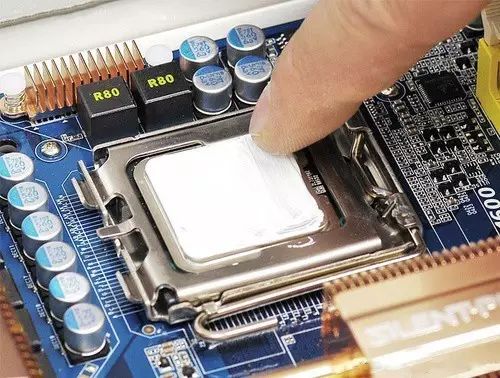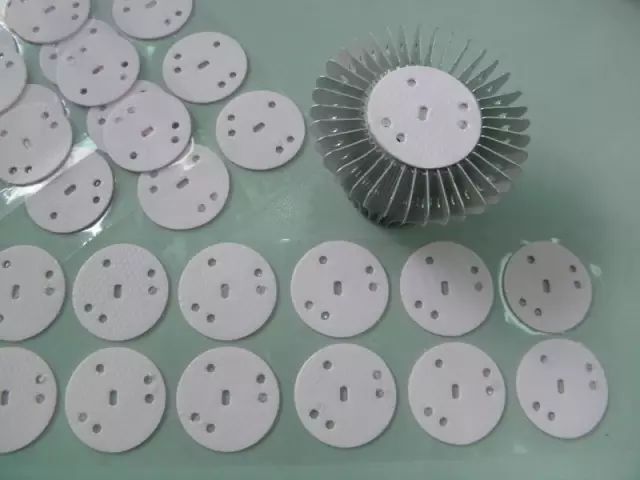

Hotline:0755-22277778
Tel:0755-22277778
Mobile:13826586185(Mr.Duan)
Fax:0755-22277776
E-mail:duanlian@xianjinyuan.cn
Method for selecting thermal conductive materials based on interface gap determination
1. When the interface gap is very small (≤ 0.5mm) and the interface is flat
When the interface gap is very small (≤ 0.5mm) and the interface is flat, thermal conductive silicone grease, thermal conductive mud (liquid), two-component thermal conductive adhesive (cured type), ultra-thin thermal conductive gasket can be selected. The compression thickness of liquid material can be compressed to below 0.1mm, and ultra short heat transfer distance represents extremely high thermal conductivity efficiency. When pursuing efficient thermal conductivity, paste like thermal conductive materials should be used as much as possible.
Because thermal grease and thermal mud are non solidifying liquid materials, their disadvantages are also significant.
(1) In addition to poor insulation strength or lack of insulation, long-term use of silicone grease can cause problems such as dry cracking and optical pollution due to the volatilization and migration of silicone oil molecules;
(2) After the thermal adhesive solidifies, it becomes a thermal pad with good reliability, but its installation operability is not as good as silicone grease and pads. It can be glued but cannot be applied through screen printing;
(3) The thickness of ultra-thin thermal conductive gaskets is generally between 0.2-0.4mm, which is easy to install manually, can be reworked and repaired, has good thermal stability, and the insulation strength of 0.2mm can exceed 3000V. The disadvantage is that the thickness cannot be compressed to below 0.1mm.

2. When the interface gap is large (≥ 0.5mm) and the device tolerance is also large (50%~90%), and the interface is flat
When the interface gap is large (≥ 0.5mm) and the device tolerance is also large (50%~90%), and the interface is flat, ultra soft thermal pads (with a hardness of ShoreOO 15~25) can be selected, with a compression rate of 20%~90%. For example, when the interface gap of a certain heat dissipation structure is 0.5-3mm and the device tolerance is 83.3%, the minimum thickness of the thermal pad is 3.0/(1-0.2)=3.75mm, and the maximum compression rate is (3.75-0.5)/3.75=86.7%. The installation efficiency of the ultra soft thermal pad is slightly worse than that of the conventional one.

3. When the device tolerance is very large (≥ 90%)
If the tolerance of the device is very large (≥ 90%) and cannot be improved, it is recommended to use two-component thermal conductive adhesive (curing type) with a compression rate of 20%~99% (thinnest 0.1mm). This material can make up for the tolerance to the maximum extent, because it is a thixotropic liquid material that can be stacked and does not flow, and can be applied to three-dimensional uneven interfaces.
For example, a certain electronic eye heating chip dissipates heat through its casing. The chip size is 15 * 15mm, and the distance between the chip and the casing is 0.2~3mm. The device tolerance is 93.3%, so the volume of thermal conductive adhesive required is: 15 * 15 * 3 * 120%=810mm3=0.81ml.
The density of thermal conductive adhesive varies with different thermal conductivity coefficients. The extrusion weight is determined by selecting the thermal conductivity coefficient according to the actual situation. After extrusion, the thermal conductive adhesive will solidify within 20 minutes, and its performance is similar to that of a thermal pad with elasticity. The heat sink and heating chip can also be easily separated, but the drawback is that it can only be assembled and used once and cannot be repeatedly assembled and repaired.

4. Fixing the radiator with thermal conductive material
If you want to fix the radiator with thermal conductive materials, you can choose thermal conductive adhesive tape, thermal conductive double-sided tape, thermal conductive gasket with double-sided backing tape, and thermal conductive composite material with double-sided adhesive. The advantages are to save assembly processes and costs, but the disadvantages are limited thermal conductivity efficiency and the risk of delamination. The advantages of using thermal conductive adhesive.
(1) Thermal conductive adhesive can be compressed to a very thin thickness, with the best thermal conductivity effect, but there is a risk of aging and delamination;
(2) The thermal conductivity of double-sided tape is relatively low (≤ 1.0W/mk), and its aging resistance is average;
(3) The adhesive strength of double-sided adhesive thermal pads is stronger than that of double-sided adhesive tape. The thermal resistance of thermal pads combined with different adhesive thicknesses and thermal conductivity coefficients is also different, which can achieve better thermal conductivity and aging resistance than double-sided adhesive tape, but at a higher cost;
(4) Double sided adhesive thermal conductive composite materials are made by coating polymer adhesives (anti-aging, high thermal conductivity) on both sides of substrates (copper sheets, aluminum sheets, etc.), and bonding them to the thermal interface through heating, thereby achieving efficient thermal conductivity and anti-aging bonding effects.

Advanced Institute (Shenzhen) Technology Co., Ltd, © two thousand and twenty-onewww.avanzado.cn. All rights reservedGuangdong ICP No. 2021051947-1 © two thousand and twenty-onewww.xianjinyuan.cn. All rights reservedGuangdong ICP No. 2021051947-2